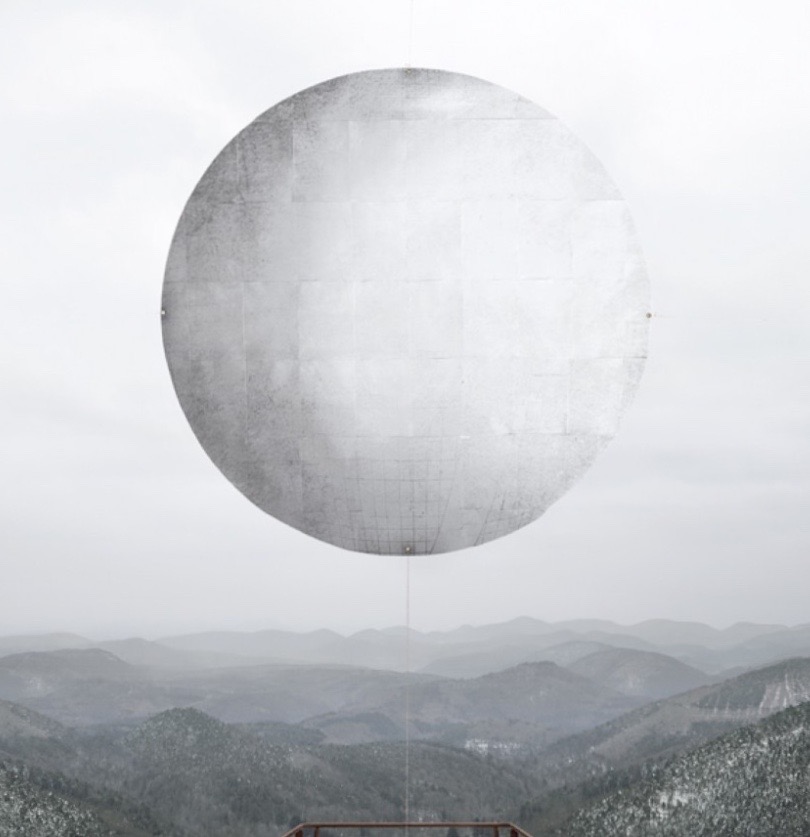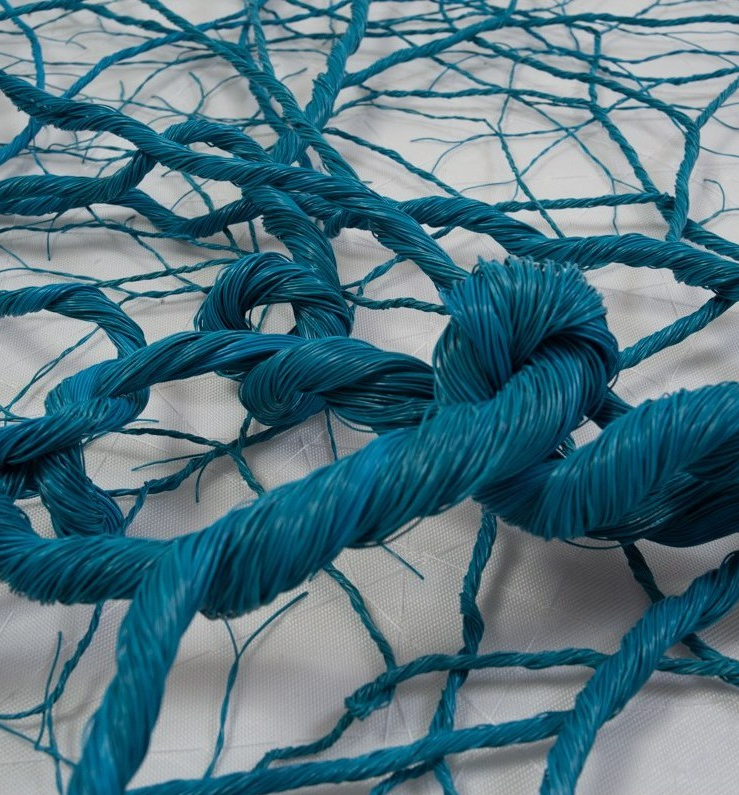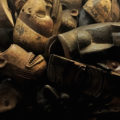Fanny Gicquel : close to the cataract
There is always an impression of fragility with glass. Perhaps because it is the materialization of a breath and we know how much a breath can break. A frozen breath whose contours would be words, whose breakings always have an air of threat. With glass, we make pretty things like little animals, menageries that gather dust on the shelves when we don’t know how to love them. With glass, we sink into the breathing of another. Fanny Gicquel, with glass, gives a second form to our bodies, the double of a heart with Plain Pleasure, or that of a rib cage with I said cage no room. In the light, these glass ducts shine and it is as if they underline an absence.
Two sisters or two performers, depending on the situation, smoke or vape. They don’t speak to each other and perhaps understand each other on the side. The installation Close to the Cataract is designed for two people, who are complicit enough to seek each other’s company and yet so absorbed in themselves that they seem to miss each other; this is also what brings them together with two heroines of the British novelist Jane Bowles: Harriet and Sadie, sisters in Camp Cataract (1949)
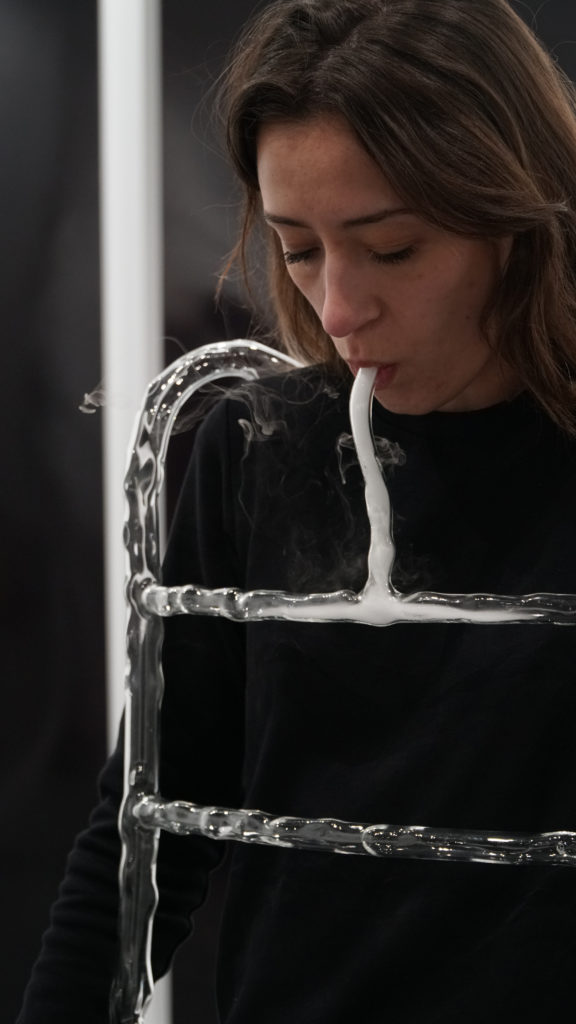
One inhales, the other exhales. It’s the same smoke and you can see from the condensation and the drops of water how close they are. Live as close as possible to each other. They are two glass flutes that carry an inaudible music, perhaps because we are not in tune, in this same time that is here as if extended. It is like two runners passing the baton to each other, because they cannot hold hands. The second, the third in a family, sometimes by a few minutes, often by several years: what to do with one’s own place? We are on the verge of a rupture, the cataract and the sound of the fall should engulf everything. A wet explosion followed by a haggard silence. This is what lies between the lines, what overflows from the words: the unspoken nature of literature, dear to Bowles and to his contemporary, the American playwright Tennessee Williams. Dear perhaps to all those who know what can be lost by talking too much.
We cling to the gestures as if we were trying to communicate. One inhales and the other exhales her electronic cigarette. She pulls her head into her cage; inside there is still something that does not sit well, perhaps an anxiety. All in tension, the score Au diable les sœurs begins with an air of playing with hands, four hands that seek each other out and rebuke each other until they attack each other’s faces. Mimicry is said to be a strategy of seduction. It is said that reproducing the gestures of the other is a way of seeking approval. It is said that mirroring increases empathy, but anyone who has been confronted with someone who imitates them too much knows that irritation is not far off. We” don’t hold on to much. Boundaries are always being recomposed and you have to be prepared to see the blow go off, even in your hands. The space between the hands does not only indicate the resistance of the air, but also everything that one has to invest in a performance; the interpretative capacity.
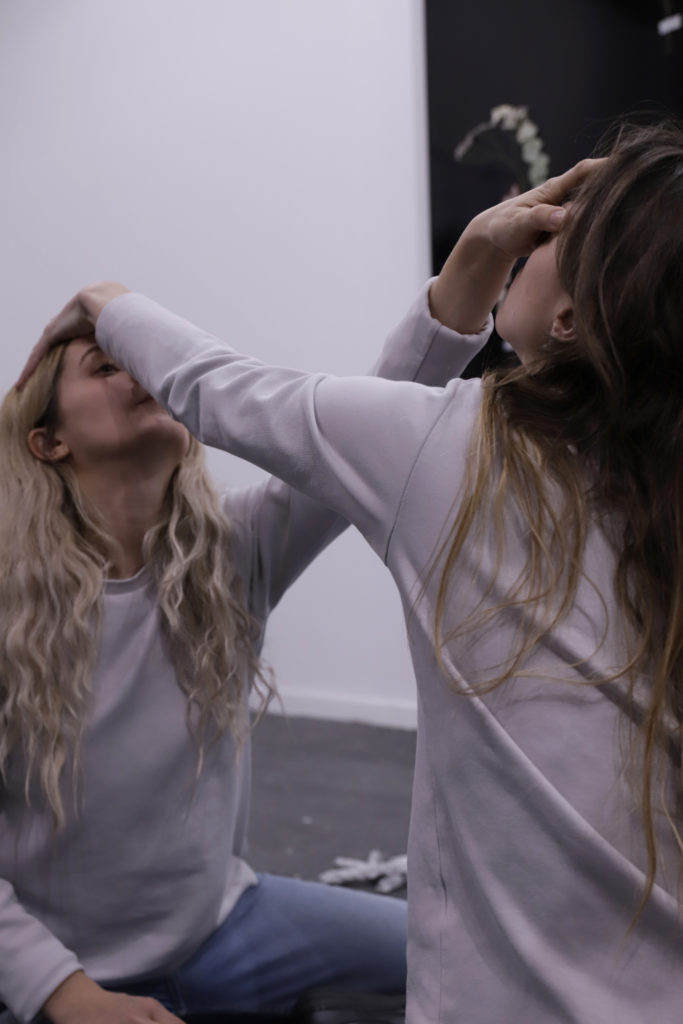
They don’t speak to each other and perhaps understand each other on the side. In what is being played out, small gestures divert large rivers and variations reveal a traumatic event. Jane Bowles’ heroines are presented to us as “dysfunctional” and perhaps it is indeed of rehashing that the installation, the camp, speaks to us. What would we have done differently if we had known? Could we read the events differently? What temporality informs our judgments and assessments? The story does not make a decision and leaves the reader with an open ending. The installation itself plays with suspense and the objects gently placed on the floor give a sense of an environment. The fragile hooks put the walls and the floor in tension, all that we believe to be given.
Who will have the last word of the two young women? In Fanny Gicquel’s Invention Exercise, they compose and recompose words from the same set of letters. What could be a game of anagrams becomes, however, a confrontation about language through the intensity of the protagonists. They do not speak, but the letters they rearrange more and more violently, clash and find a sonic materiality. It is a game that forces the possibilities of language; words are formed before thought, the image of words even before their meaning. It is not possible through language to reach the thought of the other, which exceeds, overflows; the contours of the same words change according to whether they are of one or the other. Once again, we touch on the unspoken, and on what in Jane Bowles or Tennessee Williams makes literature.
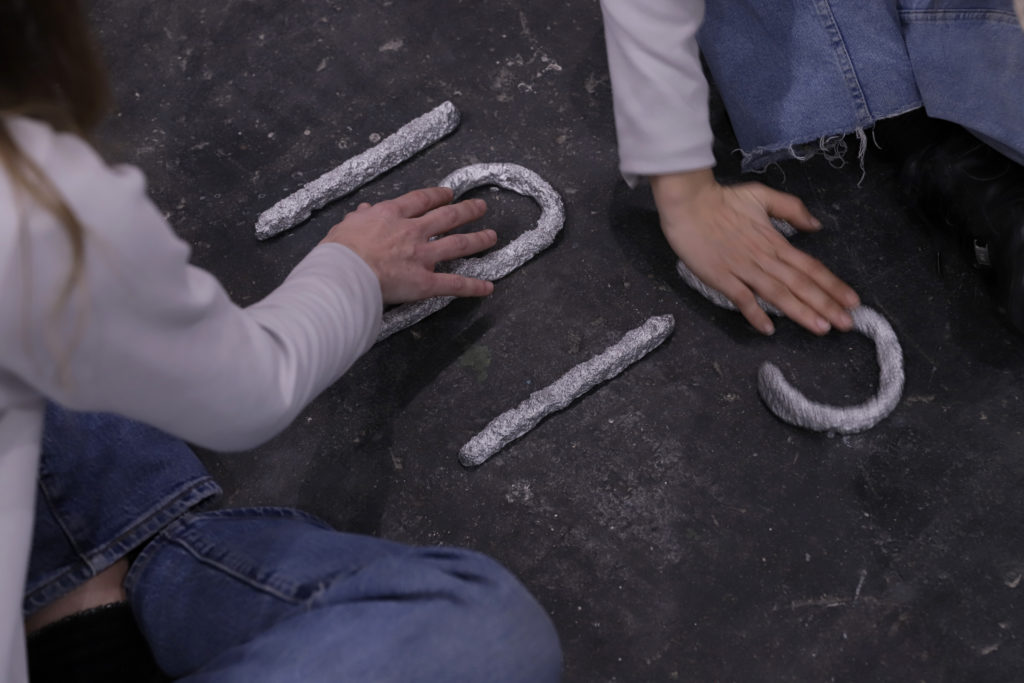
In the multiple interactions that the objects provoke, there is the idea of collaboration. With To Pass in his Head, it is necessary to work hand in hand to carry the sculpted aluminium disc and, as the title suggests, to empathise. The disc is passed from one face to the other in a circular rotation, in a revolution that induces passage like a ritual that would mark one’s readiness to open up or receive the other. To put oneself in the head of the other as to put oneself in The skins from others with the skin of the others implies to think in one’s own place. What your hand are telling me is part of this same movement by extracting the lines of the hand and materialising them in aluminium. Lines of life which, like jacks, are as much a bet on the future as the ambition to enter the life of the other through the surface. The different protocols that Fanny Gicquel thinks of lead us to manifest a link, to make explicit the intention behind a simple gesture and in the journey towards the other to go to the borders of empathy and violence.
The hand that caresses can also be the one that strikes. The glass fists of An Insecure Hand undoubtedly contribute to the ambiguity of the whole installation. Without fingers, this counter-form, which acts like a glove, makes the person wearing it clumsy. A hand without fingers, two hands without fingers, is like having two left hands that do not allow one to sign, to communicate through the sign. A boxer would say that it is the most direct access to the other, through the blow. The touch of the fists is blunt, it suffocates at the same time as it embraces. The fight does not prevent a form of tenderness, the ambiguity of a feeling in the body to body. The person who wears them carries the difficulty of expressing himself without hurting the other person. Is it a prosthesis or a handicap? Glass makes what has no outline shine. It has no consciousness but manifests and amplifies the impulses that run through us. There is always an impression of fragility with glass. Even more so when you hang up the gloves, when you tie them delicately to a rack.
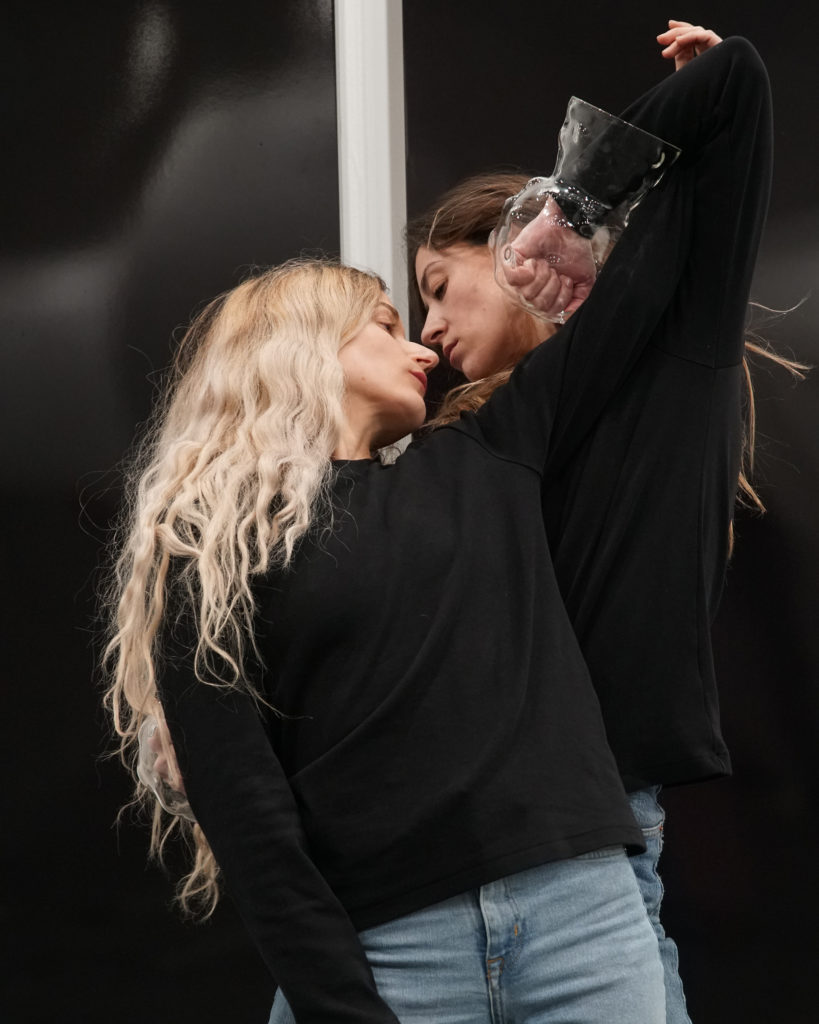
Where does a waterfall stop? The loop of the installation thus acts as if it constantly allows for new rereadings, an opportunity to see what is tied up without ever really untying itself and to go to the limits of a text, to its doors, to its breaths. On the two large heat-sensitive plates of The Door between them, the sisters place flowers as in a herbarium. A way of gathering a moment, of sketching out another language perhaps, and of preserving a memory in a certain way. Slowly, Fanny Gicquel sponges hot water on these surfaces. As the water trickles down, the steam and fog render the shiny surface opaque, giving a breath of air to the odourless flowers. We no longer see the reflection but simply the presence. Here we are, for a moment, back to life, near the catarac
One inhales, the other exhales.




